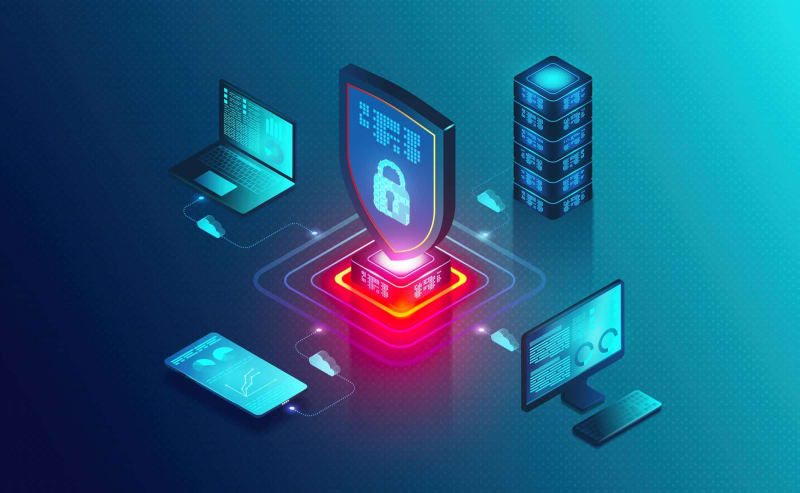Introduction:
Cybersecurity has become an integral part of every organization's operations, as the digital landscape continues to evolve. With the increasing sophistication of cyber threats, organizations face significant risks to their sensitive data, systems, and networks. In this context, risk management plays a crucial role in identifying, assessing, and mitigating potential threats. This article explores the concept of risk management in cybersecurity, highlighting its importance, key components, and best practices.
I. Understanding Risk Management:
Risk management in cybersecurity refers to the systematic process of identifying, analyzing, evaluating, and prioritizing risks to an organization's information assets and implementing appropriate measures to mitigate those risks. It involves proactive measures to minimize the likelihood and impact of cyber incidents, thereby safeguarding the confidentiality, integrity, and availability of critical information.
II. The Importance of Risk Management in Cybersecurity:
Proactive Approach: Risk management allows organizations to adopt a proactive approach to cybersecurity by identifying potential vulnerabilities, threats, and risks. This enables them to implement appropriate controls and safeguards to prevent or minimize the impact of cyber incidents.
Cost-Effective Measures: Implementing robust risk management practices helps organizations allocate their resources efficiently. By prioritizing risks based on their potential impact, organizations can focus their investments on the most critical areas, optimizing the allocation of their cybersecurity budget.
Compliance and Legal Requirements: Effective risk management enables organizations to comply with relevant legal and regulatory requirements in their respective industries. It helps organizations align their cybersecurity practices with established frameworks, such as the National Institute of Standards and Technology (NIST) Cybersecurity Framework or the General Data Protection Regulation (GDPR).
III. Key Components of Risk Management in Cybersecurity:
Risk Identification: This involves identifying potential risks and vulnerabilities to an organization's information assets. It includes analyzing the organization's infrastructure, systems, applications, and processes to identify weaknesses that can be exploited by cyber threats.
Risk Assessment: Once risks are identified, a thorough assessment is conducted to evaluate their potential impact and likelihood of occurrence. This step involves considering various factors, such as the value of the asset, the threat's capability, and the existing controls in place.
Risk Mitigation: After assessing risks, organizations develop and implement strategies to mitigate or reduce them. This includes implementing security controls, deploying technologies, and establishing policies and procedures to address identified risks effectively.
Risk Monitoring: Continuous monitoring is essential to detect new risks, evaluate the effectiveness of implemented controls, and identify any changes in the threat landscape. This enables organizations to update their risk management strategies and respond promptly to emerging threats.
Incident Response: Despite robust risk management practices, incidents may still occur. Therefore, organizations need to have an incident response plan in place to minimize the impact of cyber incidents, restore operations, and investigate and learn from any breaches.
IV. Best Practices in Risk Management:
Establish a Risk Management Framework: Organizations should develop a risk management framework that aligns with industry standards and best practices. This framework should include policies, procedures, and guidelines for identifying, assessing, and mitigating risks.
Conduct Regular Risk Assessments: Regular risk assessments are crucial to keep up with the evolving threat landscape. Assessments should be conducted at predefined intervals or whenever significant changes occur within the organization's infrastructure or business processes.
Employee Awareness and Training: Employees play a critical role in maintaining an organization's cybersecurity posture. Regular training and awareness programs should be conducted to educate employees about potential risks, safe online practices, and the importance of reporting any security incidents promptly.
Implement Multi-Layered Security Controls: Organizations should deploy a multi-layered security approach that includes network security, endpoint protection, access controls, encryption, and intrusion detection systems. This helps ensure that multiple layers of defense are in place to detect and prevent cyber threats.
Regularly Update and Patch Systems: Outdated software and systems can pose significant security risks. It is crucial to keep all systems, applications, and firmware up to date by regularly applying patches and security updates.
Conclusion:
In an increasingly digital world, risk management in cybersecurity is of paramount importance. By adopting a proactive approach, organizations can effectively identify, assess, and mitigate potential risks, safeguarding their sensitive information and critical assets. By implementing a comprehensive risk management framework and following best practices, organizations can enhance their cybersecurity posture, comply with regulations, and minimize the impact of cyber incidents. Through continuous monitoring and incident response, organizations can adapt to the ever-evolving threat landscape and stay one step ahead of potential cyber threats.










Top comments (0)